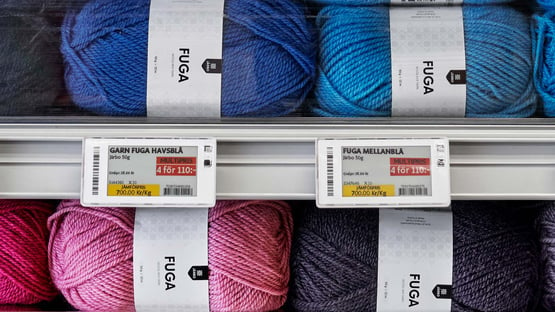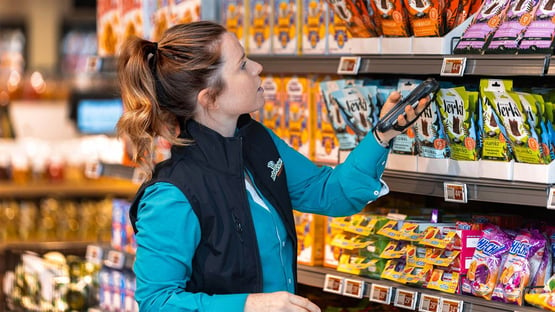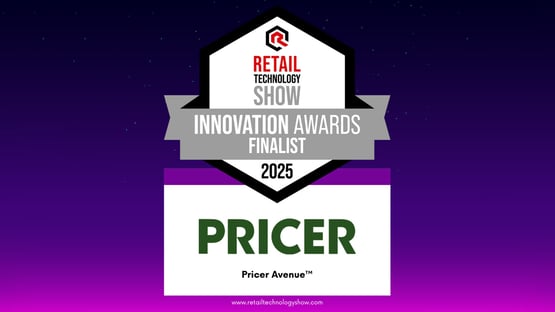Introduced 30 years ago as a replacement for paper price labels, electronic shelf labels (ESLs) have come a long way and are now one of the most flexible promotional tools available. Discover the latest use-cases in ESLs’ digital leap forwards.
There are two key ways to think ahead about ESLs. Firstly in terms of their promotional flexibility and secondly their ability to perform more effectively than the many add-ons to conventional labels.
Because digital labels are all connected to a single network, it is possible to make changes to the whole estate - or any part of it - instantly. This is the only way that retailers can introduce dynamic pricing, a technique that consumers are now comfortable with, as they are now used to seeing it operate online.
What this means is, given the current sustainability challenges around 2-4-1 deals based on the claim that they encourage consumers to buy more than they need, the same technique can be applied for good – reducing waste. By making an offer near the end of the day on goods that would otherwise be thrown away because they have reached their sell-by date, consumers get a good deal while retailers can continue to cut down on wasted food.
More benefits with dynamic pricing
The dynamic pricing innovations continue by offering a daily 'deal' available between 5 and 7 pm on popular rush hour items, or an early morning deal available between 7 and 9 am for people who go to work early, particularly on those where price sensitivity is high, thus enabling the retailer to show how they are supporting customers in times when the impact of inflation remains high even as the headline rate falls.
Conversely, electronic labels can provide the essential information that consumers need to assemble ingredients for meals, special occasions, projects, all of which have low price sensitivity.
Dynamic pricing also lends itself to one of the most popular promotional techniques that has been adopted by almost all supermarkets – lower prices for loyalty members. However, this is a modern technique that is often executed using outdated methods, notably paper labels and point-of-sale material.
Using electronic labels, retailers can adapt quickly to circumstances based on stock levels, demand, competitive pricing and trade activity, and they can run it out differently in every store based on local demographics.
This is where the growing amount of data retailers hold will further drive electronic label adoption. For instance, most supermarkets stock, assort and range according to a generalised picture of local demographics, but the data shows a different picture, even within a single street which may have identical houses but where the profile of each family in terms of their wealth and preferences is very different.
Using this data, retailers can create much more granular store profiles and stock accordingly.
Old ideas may also be returning to favour. Cross-sell promotions seem to have fallen out of favour in preference for low prices, which is a hangover from the post-Covid period and which has become established during the cost of living crisis. However, the focus on price as the main attraction is likely to widen as consumer confidence returns.
According to the latest GfK Consumer Confidence Index, confidence rose two points to -19, marking an improvement from -21 points in both March and February.

Many functions of electronic labels
On the second point about the performance of labels, electronic labels can fulfil the same function as many different types of conventional shelf edge products, including data strips, wobblers, shelf talkers, clip strips, shelf clips and leaflet holders. On occasion, some of these products may be complimentary to electronic labels but this can create the risk of a crowded shelf edge and poor communications with shoppers.
While there will often be pressure from the brand to use these products as part of a promotion, we are now starting to see greater collaboration between retailers and brands that avoid these problems.
Some of these products are complimentary, including aisle signs and over-shelf banner hangers, because they can attract the customer’s attention from further away than shelf edge signs and bring them to a promotional area. There are also a number of hybrid products that combine paper and LED, but these are really a compromise compared to what full electronic labels are capable of.
We have shown over many years the advantage of switching to electronic labels from a purely economic point of view, the fact that they save labour hours, but now we can see that they have the flexibility to act as sales boosters and drivers of customer loyalty.
In this environment, when the agility to act quickly is paramount, there is really no more an affordable option other than electronic labels.
Do you want to digitalize your stores or speak to an expert about ESLs, feel free to reach out to us!
This article was originally published in Retail Times on May 13, 2024.



